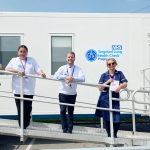Assessment and treatment for people with fertility problems
Evidence Reviews
Non-invasively lengthened spinal rods for scoliosis
Rituximab for acquired haemophilia
Appraisal of screening for depression
Screening for osteoporosis in postmenopausal women
Intravenous iron for the treatment of iron deficiency anaemia
Functional endoscopic sinus surgery for chronic rhinosinusitis and nasal polyps
Occlusion of the left atrial appendage to prevent stroke in people with atrial fibrillation
Management of eating disorders in children and young people: In-patient, specialist out-patient or community child and adolescent mental health services
Repair of asymptomatic or minimally symptomatic inguinal hernias in adults
Transformal epidural injections for the diagnosis and management of sciatica
Services
GuideLites
NICE Guidance Reference
Title
CG30
Long-acting reversible contraception (update)
CG156
Assessment and treatment for people with fertility problems
CG168
The diagnosis and management of varicose veins
CG178
Psychosis and schizophrenia in adults: treatment and management
CG175
Prostate cancer: diagnosis and treatment
CG180
Atrial fibrillation: the management of atrial fibrillation
CG181
Lipid modification: cardiovascular risk assessment and the modification of blood lipids for the primary and secondary prevention of cardiovascular disease
CG185
Bipolar disorder: the assessment and management of bipolar disorder in adults, children and young people in primary and secondary care
CG189
Obesity: identification, assessment and management of overweight and obesity in children, young people and adults
CG190
Intrapartum care: care of healthy women and their babies during childbirth
CG191
Pneumonia: Diagnosis and management of community- and hospital-acquired pneumonia in adults
NG2
Bladder Cancer: diagnosis and management
NG3
Diabetes in pregnancy
NG5
Medicines optimisation
NG12
Suspected cancer: recognition and referral













